George Floyd race riots show American dreams in flames
The twin coronavirus tragedies of lost lives and jobs had turned the US into an emotional tinderbox. The killing of George Floyd supplied the spark.
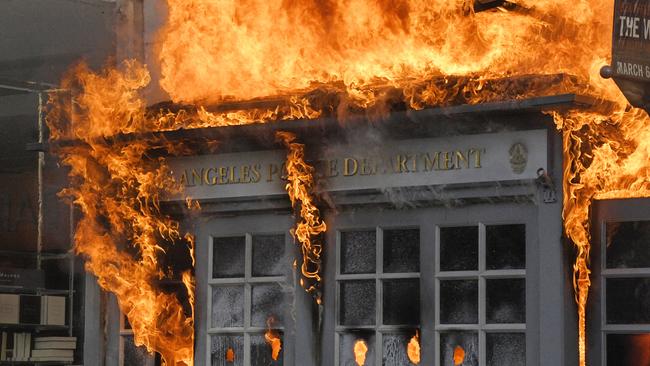
America was ready to explode even before George Floyd was killed by the Minneapolis police.
The twin tragedies of 40 million people — one-quarter of the US workforce — losing their jobs and 100,000 people losing their lives during the coronavirus pandemic had turned the US into an emotional tinderbox that was waiting for a spark to set it off.
No spark could have been more potent than the sickening video of police officer Derek Chauvin killing unarmed 46-year-old Floyd by leaning on his neck with his knee last week.
Now cities across the country are being convulsed by mass protests, riots, burning buildings, random shootings and such a breakdown in law and order that the national guard has been deployed and the Pentagon put on standby to bring in the military.
At least two people were shot dead as police cars were set ablaze, police officers attacked and police stations and other buildings torched and looted.
In Washington, even the White House was briefly placed in lockdown as Donald Trump watched the escalating protests from the windows while his Secret Service agents stood guard.
It prompted the President to send a remarkable tweet about his own safety and about the vicious dogs that guard the home of America’s first family.
“I was inside, watched every move and couldn’t have felt more safe,” Trump tweeted. “Nobody came close to breaching the fence. If they had they would … have been greeted with the most vicious dogs, and most ominous weapons, I have ever seen. That’s when people would have been really badly hurt, at least. Many Secret Service agents just waiting for action.”
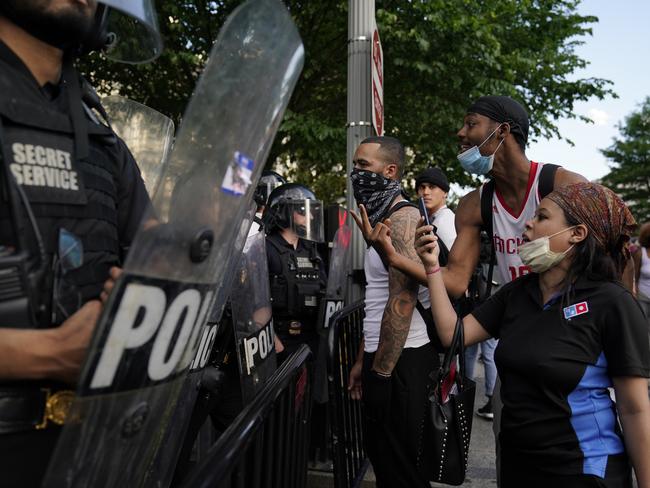
But the protests now engulfing the US are about more than the killing of Floyd and systemic police brutality by US police toward black Americans. They are also an explosion of pent-up anger for everything Americans have suffered during this coronavirus pandemic, from the collapse of their economy, the shattering of jobs and livelihoods, the fear of infection and death, and the maddening restrictions on normal life.
“People are seething about all kinds of things,” Barbara Ransby, a historian at the University of Illinois, told The Washington Post. “There are major turning points and ruptures in history … this is one of those moments, but we’ve not seen how it will fully play out.”
Douglas Brinkley, a historian at Rice University, said the protests could continue to escalate because the country was so stressed out by the pandemic. “The threads of our civic life could start unravelling, because everybody’s living in a tinderbox,” he said.
For many African-Americans, the sight of former policeman Chauvin slowly killing Floyd with his knee was the last straw after enduring the toughest few months for black Americans since the struggles of the civil rights era.
The coronavirus pandemic has magnified the country’s economic and racial divide, with black Americans getting hit disproportionately by both the virus itself and the economic fallout.
Studies suggest that the rate of black fatalities from the coronavirus is 2½ times higher than for whites, a figure that also reflects inequalities in health and living standards.
“Social conditions, structural racism and other factors elevate risk for COVID-19 diagnoses and deaths in black communities,” scientists from Johns Hopkins University wrote last week, after releasing a study showing the disproportionate impact of the pandemic on African-Americans.
Likewise, blacks and Hispanics have been hit hardest by the country’s economic shutdown because they are often in the poorest-paid jobs, which were among the first to go during the shutdown.
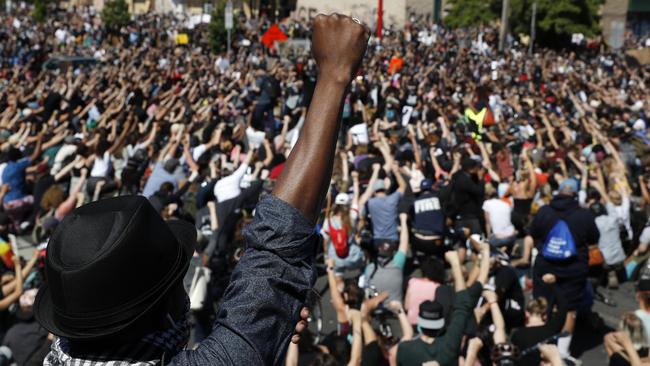
This has coincided with anger over the high-profile case of a black man, Ahmaud Arbery, who was shot dead by a former policeman and his son while he was jogging in Georgia. Then last week there was the viral video of a white woman calling 911 claiming she was being threatened by an African-American after a black man asked her to place her dog on a leash in New York’s Central Park.
But it was the video of Chauvin, with his knee pressing down on Floyd’s neck for eight minutes while Floyd was pleading “I can’t breathe” as three other officers stood nearby and did nothing, that sent protesters into the streets.
Trump was initially sympathetic about people’s anger, describing Floyd’s death as “a shocking sight”. But as the protests turned violent in Minneapolis on Friday (AEST), with cars, buildings and even a police station set on fire, Trump turned against the protesters. “These THUGS are dishonouring the memory of George Floyd and I won’t let that happen,” he tweeted. “Any difficulty and we will assume control, but when the looting starts, the shooting starts.”
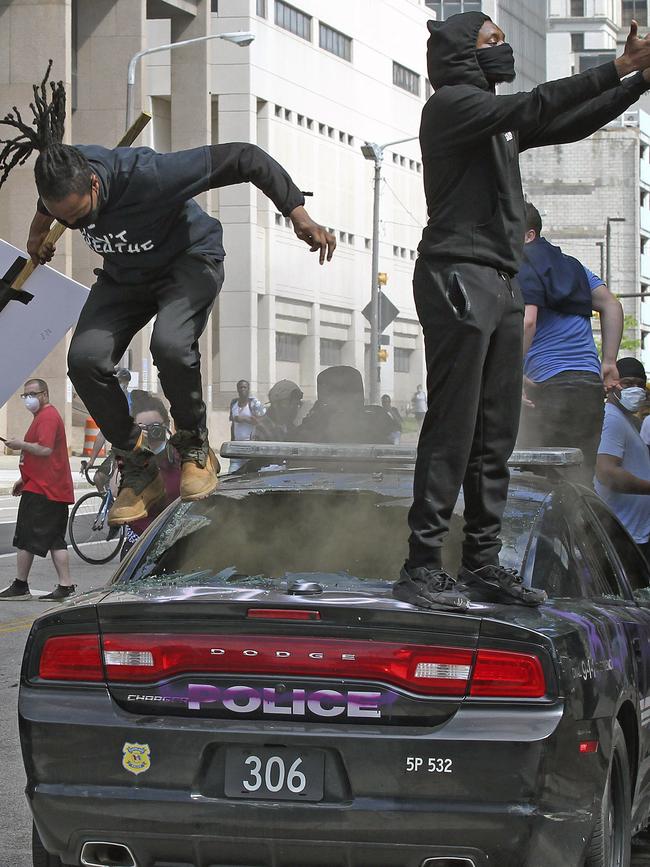
At that point these riots became an election issue, with Trump now portraying the riots as wanton destruction engineered by his political opponents. Twitter slapped a warning on Trump’s “shooting” tweet, saying it glorified violence, while Trump’s election opponent, Joe Biden, accused the President of “calling for violence against American citizens during a moment of pain”.
“The original sin of our country still stains our nation today,” Biden said. “And sometimes we manage to overlook it … but it’s always there. And weeks like this, we see it plainly that we’re a country with an open wound.”
Trump walked back his words, saying he did not want looters to be shot, but he has since moved to politicise the riots, blaming left-wing mayors for the chaos and claiming the riots were being led by the “radical left”.
“It’s the ANTIFA and the Radical Left. Don’t lay the blame on others,” he tweeted on Sunday (AEST). “These are ‘Organised Groups’ that have nothing to do with George Floyd. Sad!”
Trump has accused Democrat mayors and governors of not standing up to the rioters in the way that Republicans would.
“(Democrat) mayor Jacob Frey of Minneapolis will never be mistaken for the late great General Douglas McArthur or great fighter General George Patton,” Trump tweeted. “How come all of these places that defend so poorly are run by Liberal Democrats? Get tough and fight (and arrest the bad ones). STRENGTH.”
....These THUGS are dishonoring the memory of George Floyd, and I won’t let that happen. Just spoke to Governor Tim Walz and told him that the Military is with him all the way. Any difficulty and we will assume control but, when the looting starts, the shooting starts. Thank you!
— Donald J. Trump (@realDonaldTrump) May 29, 2020
While Trump is being criticised by the liberal media for his attempts to politicise the protests, the President knows that attacks on the protesters are likely to be popular with his base. This will only grow if the protests continue to be violent in the days ahead.
But Trump’s attacks on the protests will be viewed by many black voters as an attack on their rights and will help shore up the already strong support for Biden among African-Americans.
Some Democrats have also backed Trump over the protests, saying such violence is inexcusable regardless of the anger over Floyd’s death. Minnesota’s Democrat Governor, Tim Walz, said the violence that has wracked his city over four consecutive nights made “a mockery of pretending this was about George Floyd’s death or inequalities. It was about attacking civil society (and) instilling fear”, he said.
Minneapolis officials claim that 80 per cent of those involved in the city’s riots came from out of town.
Atlanta’s Democrat Mayor, Keisha Bottoms, was visibly angry about the violent protests in her city, which saw CNN headquarters pelted with rocks and other projectiles. “What I see happening on the streets of Atlanta is not Atlanta. This is not a protest. This is not in the spirit of Martin Luther King. This is chaos. A protest has a purpose,” Bottoms said.
Trump, whose feud with the liberal CNN runs deep, retweeted a tweet from a conservative supporter, saying: “In an ironic twist of fate, CNN HQ is being attacked by the very riots they promoted as noble & just.”
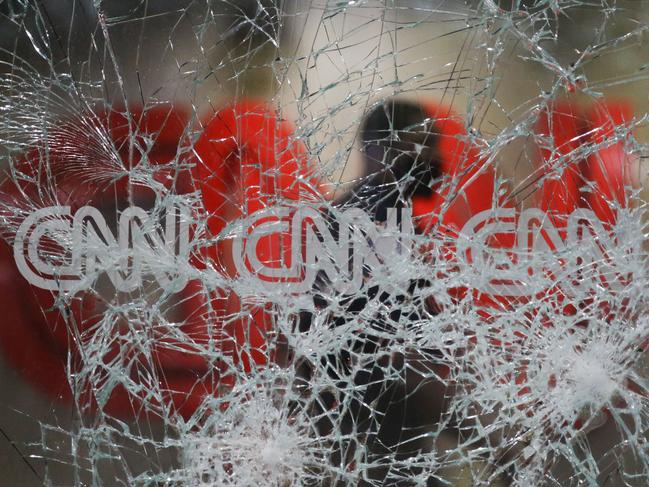
The arrest of a CNN crew while filming the riots in Minneapolis received widespread coverage and condemnation, fuelling the sense that established norms in the US are being upended amid the riots and the pandemic.
The riots have continued despite charges of third-degree murder being laid against Chauvin, who faces decades in jail if convicted. A state and federal investigation is considering laying charges against the other three police officers who stood next to Chauvin and took no action to prevent him from harming Floyd.
The move to charge Chauvin with murder so quickly is rare in any US police force, especially in Minnesota, but it shows what pressure authorities are under in this case. The state’s authorities have even used the police killing of Australian Justine Damond in Minneapolis in 2017 as an example that a policeman can be convicted of murder in the state.
Former policeman Mohamed Noor last year became the first policeman in Minnesota to be convicted of murder after shooting Ms Damond, 40, after she called 911 to report a suspected sexual assault behind her home. But the conviction of Noor was obtained only after a gruelling trial. The police union and Noor’s colleagues formed a “blue wall of silence” that made conviction difficult.
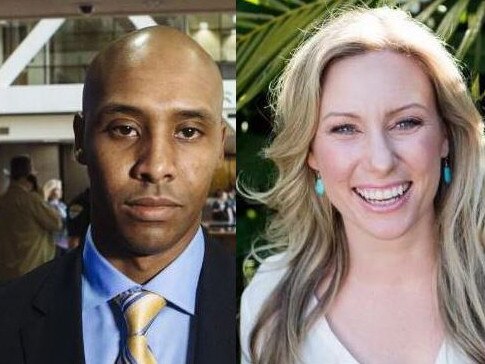
Chauvin and his three fellow officers have pleaded the Fifth Amendment, the right to remain silent, and the head of the police union has said “now is not the time to rush to judgment”.
A murder case against Chauvin may also be complicated by an autopsy report that found Floyd did not die directly of strangulation or asphyxiation. The report said Floyd suffered from coronary artery disease and hypertensive heart disease, and the combined effects of these conditions and the way the police restrained him “likely contributed to his death”.
But these riots are morphing into something broader than Floyd’s death and police violence and racism. They have become a catch-all for the grievances of many in this pandemic-hit country, which remains deeply divided by politics, race and wealth.
Cameron Stewart is also US contributor for Sky News Australia.


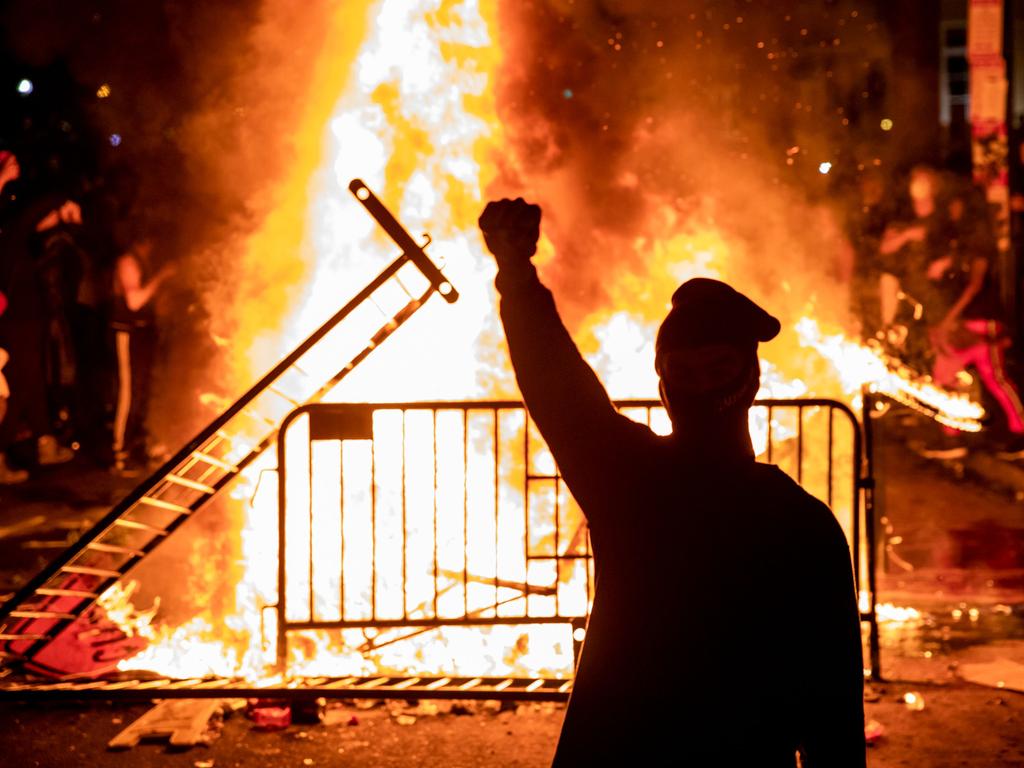
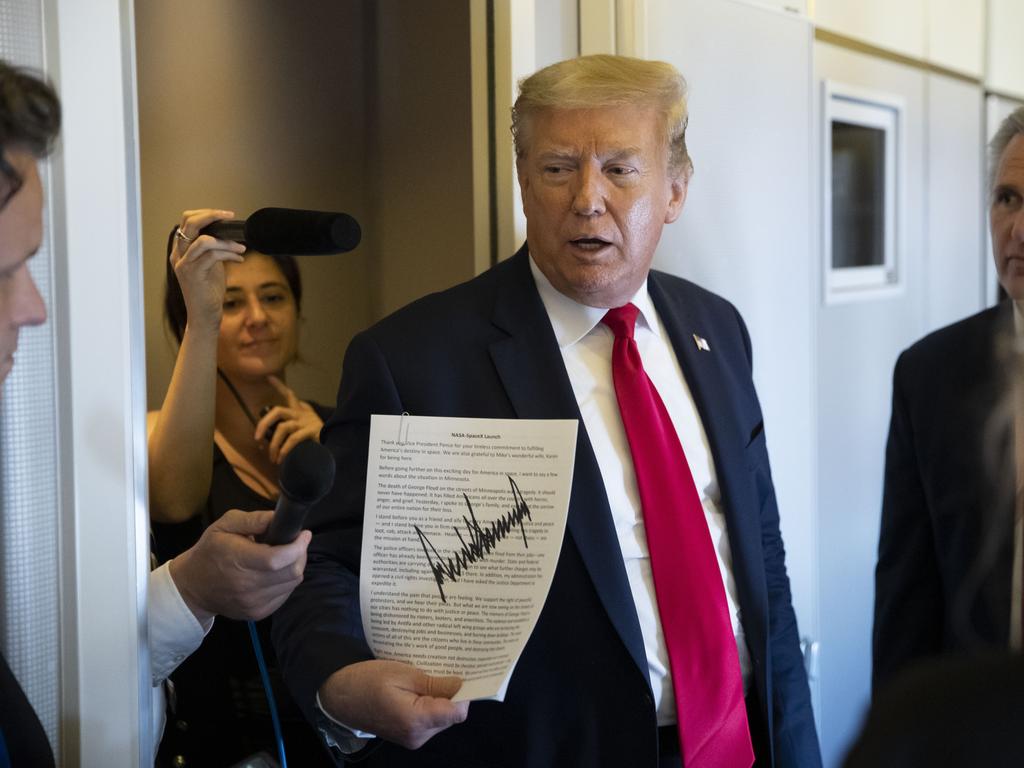


To join the conversation, please log in. Don't have an account? Register
Join the conversation, you are commenting as Logout